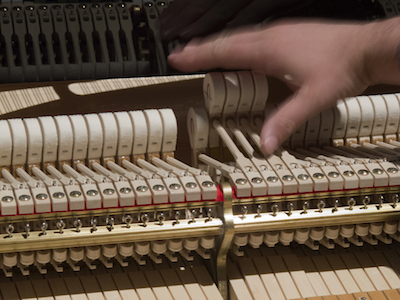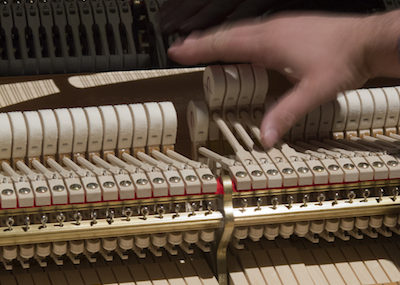The tuning fork was invented back in the 1700s by an English musician, John Shore. Each note has a Hertz (Hz) or cycles per second of the sound wave made when the fork vibrates.
Today’s standard pitch or concert pitch is a universal frequency, meaning all instruments are tuned to the same cycle. While the pitch today is A440 or C523.3, it has changed over the years, with the original tuning pitch at A423.5. When all instruments are tuned to the same frequency, it enables musicians to play music together in harmony, without clashing pitches.
While pitch pipes or electronic tuning forks are occasionally used, a tuning fork is the most common way to bring everything into tune. 
Occasionally you’ll hear of someone having “perfect pitch.” That means they can hear a certain pitch and remember it without using a tuning fork or another kind of reference. While this ensures their instrument is in tune, they will also tell you that when they hear music played out of tune, the sound can be anything but great.
A tuning fork works by a simple process. When struck, the two prongs of the tuning fork vibrate uniformly and produce a clean soundwave. The pitch of the soundwave is determined by the length of the prongs. The corresponding note of the instrument is matched to the sound created with the tuning fork.
Tuning forks aren’t just used for music. They are also used in a variety of other industries, including science, medicine, and electronics. They are often used for hearing tests, and for vibration treatment. Computers often use them, vibrating thin slices of quartz crystal to keep the processor’s clocks ticking at the proper intervals.


